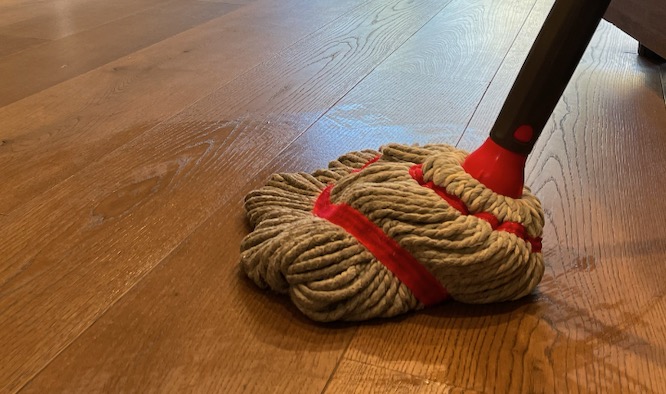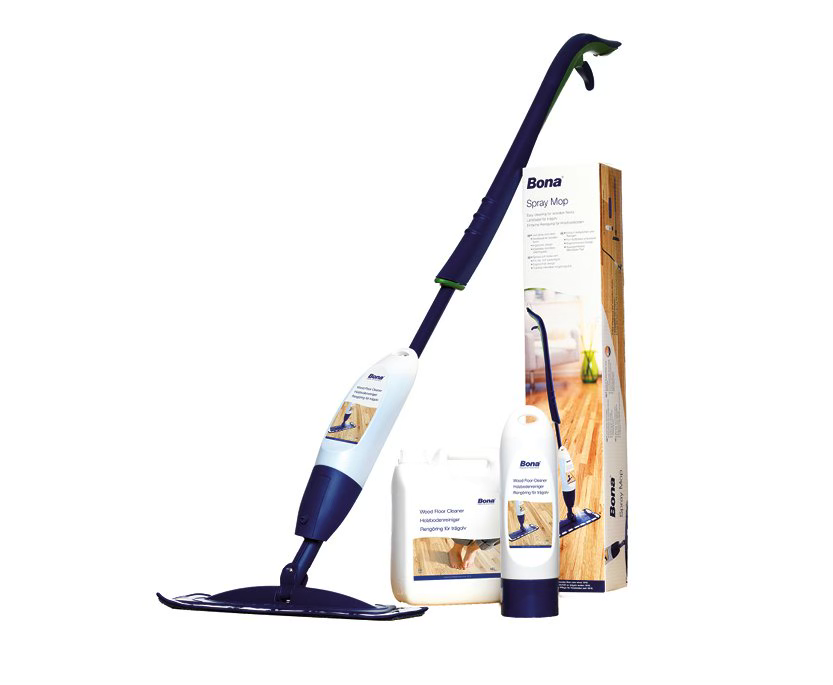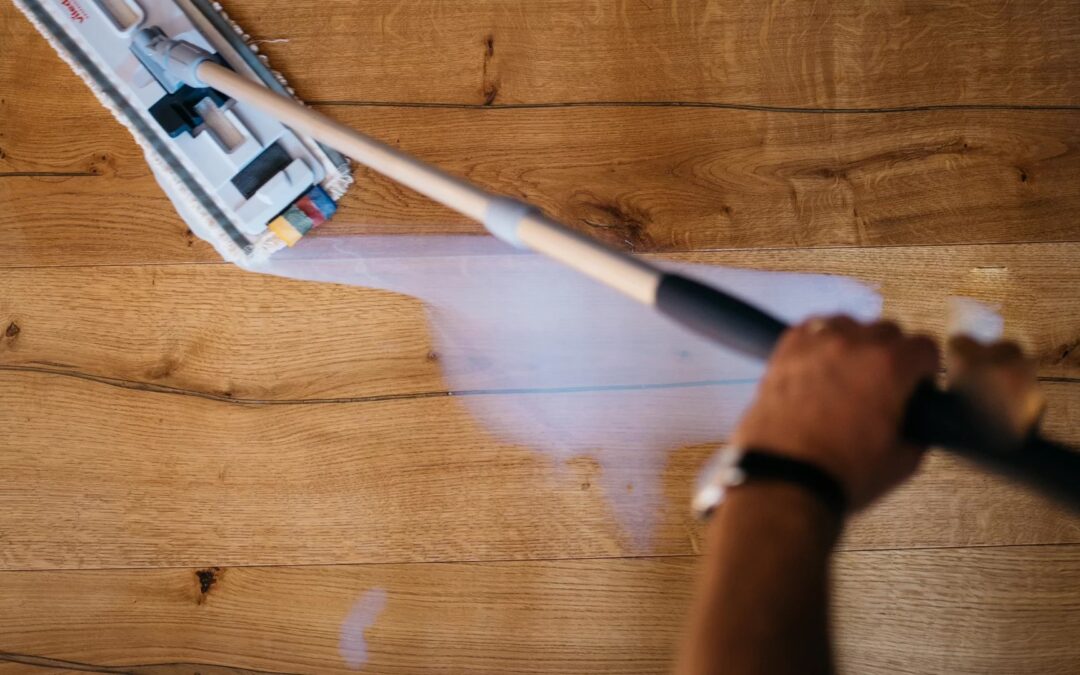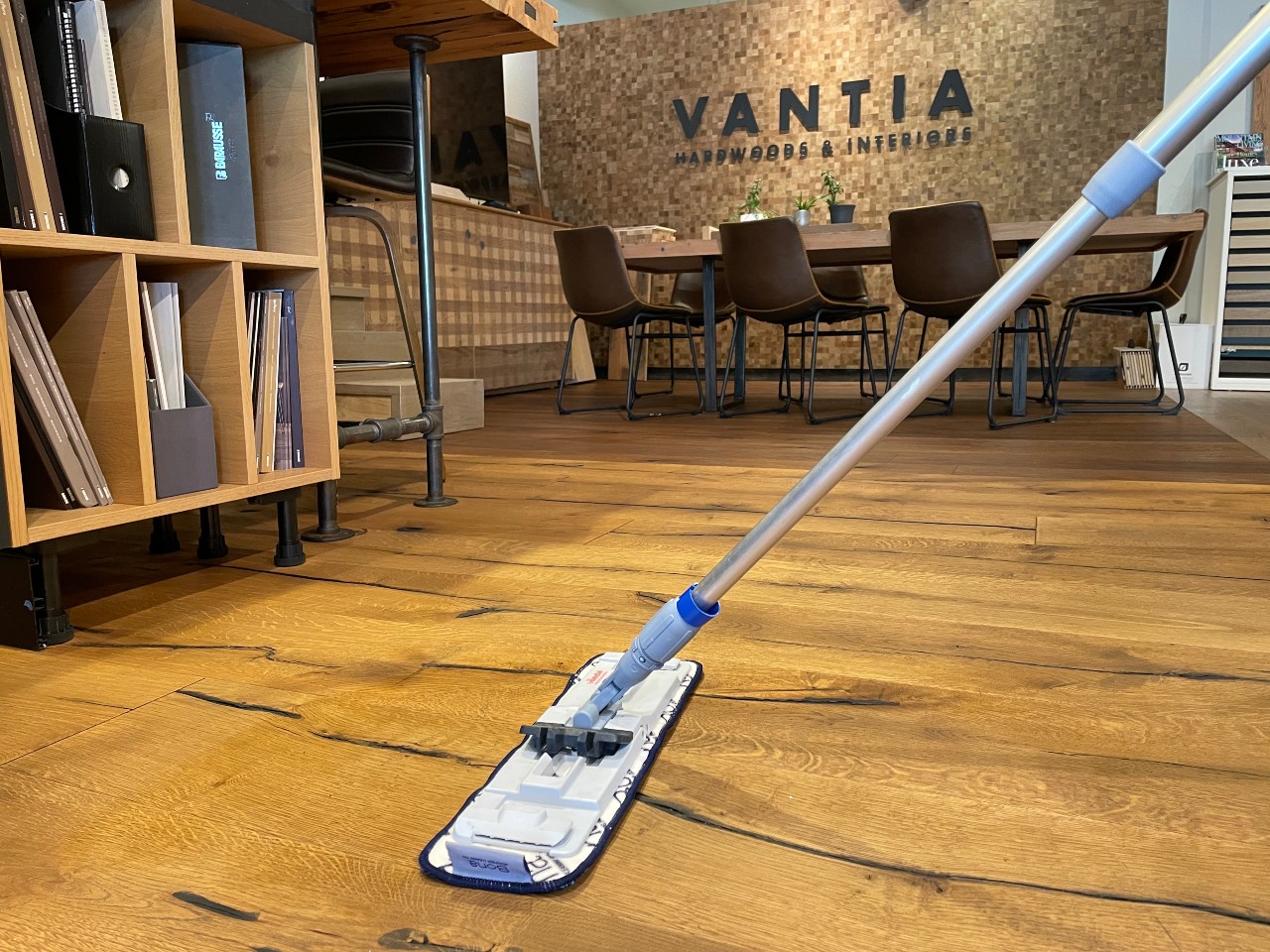The Basics of Hardwood Floor Cleaning
When it comes to cleaning hardwood floors, the process may seem straightforward, but using the wrong techniques can result in damage that’s difficult to repair. The key to keeping your hardwood floors looking beautiful and lasting longer is proper care with the right tools and products. Whether you’re dealing with everyday dust and dirt or stubborn spills, knowing the do’s and don’ts of hardwood floor cleaning is essential.
In this blog, we’ll explore the best practices for maintaining your hardwood floors and what to avoid to prevent scratches, warping, and dulling. If you’re seeking in-depth advice, this guide will provide a comprehensive breakdown of how to clean different types of hardwood floors, such as polyurethane or natural oil finishes and sealed or open flooring. Additionally, we’ll cover the common mistakes homeowners make when cleaning hardwood floors. Read on to learn how you can extend the life of your floors and keep them looking their best for years to come.
The Do’s: Best Practices for Cleaning Hardwood Floors
To keep your hardwood floors looking stunning, it’s essential to establish a regular cleaning routine that follows proven best practices. Here are the top do’s you should incorporate into your hardwood floor care regimen:
Use a Microfiber or Cotton Mop for Regular Dusting
Dust and dirt are inevitable, but they can easily scratch your hardwood floors if left unchecked. A microfiber or cotton mop is ideal for everyday dusting because it’s gentle on the surface while effectively trapping dirt and dust. This tool won’t leave any scratches and is especially good for high-traffic areas like the living room and dining room. Regular dry mopping will prevent dirt from becoming embedded in the floor’s finish, keeping your hardwood looking polished.
Utilize a Damp Mop for Deeper Cleaning
For a more thorough cleaning, using a damp mop is a must. However, be careful not to use excess water, as too much moisture can damage the wood by seeping into the seams and causing warping or discoloration. A damp mop with a small amount of warm water and a cleaning solution specifically designed for hardwood floors will remove grime without harming the finish. Make sure to wring out the mop well to avoid excess water pooling on the floor.
Choose the Right Cleaning Products
It’s essential to use cleaning products formulated for your hardwood floors to preserve their finish. It is important to use the cleaner recommended by a flooring professional because each finish has a different care and maintenance program. Avoid using harsh chemicals or any generic cleaning products that aren’t labeled as safe for hardwood flooring, as they can damage the finish and dull the surface.
Vacuum Regularly
While mopping is important, regular vacuuming is equally crucial to prevent dust and dirt buildup. Use a vacuum with a soft brush attachment or a canister vacuum to avoid scratching the floors. Ensure that your vacuum doesn’t have a rotating brush, as these can gouge or leave marks on the floor’s surface. A combination of vacuuming and mopping will keep your hardwood floors spotless and scratch-free.
By following these best practices, you can keep your hardwood floors in prime condition, preserving their natural beauty for years to come. Proper maintenance not only helps maintain the aesthetic of your wood floors but also extends their lifespan, saving you from costly repairs or refinishing.

The Don’ts: Common Mistakes to Avoid When Cleaning Hardwood Floors
While it’s important to know the right ways to clean hardwood floors, it’s equally essential to understand what not to do. Avoiding these common mistakes will help protect your floors from unnecessary damage and keep them looking beautiful for years.
Avoid Using Excess Water
Water is hardwood’s worst enemy if coated with polyurethane. While a damp mop is fine for occasional deeper cleaning, using too much water can seep into the seams of the wood, leading to warping, swelling, delaminating, peeling, and discoloration. Always wring out your mop thoroughly before using it on hardwood floors. Excess water that pools on the surface can cause permanent damage over time, so it’s important to ensure your floors dry quickly after mopping. You can use this as a rule of thumb for most brands of hardwood flooring coated with polyurethane.
Stay Away from Harsh Chemicals
Harsh cleaning products like bleach or ammonia can strip the protective finish from your floors, leaving them dull and prone to damage. It’s best to stick to cleaning solutions specifically designed for your hardwood floors. Additionally, using two-in-one cleaners or polishes containing acrylics or urethane can cause buildup and create a sticky residue, which is hard to remove and can compromise the look and feel of the wood. We also do not recommend using Murphy’s Oil Soap as it can leave a residue over time. Gentle solutions like white vinegar diluted in water or specially formulated hardwood floor cleaners are a much safer choice.
Never Use a Steam Mop
Though steam mops are popular for cleaning tile floors, they should never be used on hardwood floors. The heat and moisture from steam mops can penetrate the surface, damaging the wood and causing it to warp or delaminate. Instead, stick to a damp mop or microfiber mop for regular cleaning. This ensures your floors are cleaned effectively without exposing them to excessive heat or moisture.
No Rotating Brushes on Vacuum Cleaners
As mentioned above, vacuuming is an essential part of keeping your hardwood floors free from dirt and debris, but you need to be cautious with the type of vacuum you use. Vacuums with rotating brushes can scratch and gouge the surface of hardwood floors. If you’re using a vacuum, opt for one with a soft brush attachment or a canister vacuum with no rotating brush. This will remove dirt without harming the surface.
By avoiding these common mistakes, you’ll prevent unnecessary wear and tear on your hardwood floors. This will help maintain their natural beauty and ensure they last for decades with minimal repairs or refinishing.

Cleaning Oil-Finished Floors vs. Polyurethane Floors
Not all hardwood floors are created equal, and the cleaning approach you take should be based on the type of finish your floors have. Two of the most common types of finishes are natural oil-finished and polyurethane-finished floors. Each has specific cleaning requirements to ensure longevity and maintain the floor’s beauty.
Oil-Finished Floors (Natural Oil)
Oil-finished hardwood floors have a more natural appearance and allow the wood to breathe, but they also require regular maintenance. Here are some do’s and don’ts for cleaning oil-finished floors:
- Do use oil-specific cleaners, such as Scheucher or mafi Soap, which are designed to clean while maintaining the integrity of the oil finish. These soaps clean and nourish the wood, helping to preserve its natural beauty over time.
- Do clean regularly using a damp mop, but make sure it’s well-wrung out to avoid excess water. Too much moisture can damage the finish, and oil-finished floors are particularly sensitive to water pooling.
- Don’t use microfiber cloths, as their abrasive effect can wear down the oil finish over time. Stick to cotton cloths or soft mops to avoid damaging the surface.
- Don’t use two-in-one cleaners or polishes that contain acrylics or urethane, as these can create a buildup that ruins the natural look of oil-finished floors.
Oil-finished floors require consistent care, but with the right products, they develop a beautiful patina over time, enhancing the natural character of the wood.
Polyurethane-Finished Floors
Polyurethane-finished floors are durable and can be lower maintenance than oil-finished floors, but they still need proper care to avoid damage:
- Do use products like Bona® hardwood cleaner, which is specifically formulated for polyurethane finishes. These cleaners help maintain the finish without leaving behind a residue or causing dulling.
- Do use a damp mop sparingly and never allow excess water to sit on the surface, as even polyurethane floors can suffer water damage if exposed for too long.
- Don’t use steam mops or wet mopping methods, as the heat and moisture can weaken the polyurethane finish and cause warping.
- Don’t use abrasive cleaning tools or chemicals that can scratch or dull the finish. Regular dusting with a soft microfiber mop or vacuuming with a soft brush attachment is sufficient for daily care.
By understanding the differences between oil-finished and polyurethane floors, you can choose the right products and methods to keep your hardwood floors looking their best, regardless of the finish.
Cleaning mafi Flooring: Unique Care Instructions
Our mafi flooring is known for its natural, oil-finished non-toxic wood floors that enhance the beauty of your home with a refined and eco-friendly touch. However, these floors require a specialized cleaning approach to ensure they remain in peak condition. The mafi floors are unique due to their open-pored structure, which allows the wood to breathe and maintain a natural balance with its environment. Here are the essential steps and precautions for cleaning mafi flooring:
Use a Two-Bucket System for Cleaning
The two-bucket method is essential for mafi floors to avoid reintroducing dirt back onto the surface. One bucket should contain warm water mixed with mafi Wood Floor Soap, while the other is filled with clean water for rinsing. This technique ensures that you’re cleaning the floor effectively without redistributing dirt across the surface.
Apply mafi Wood Floor Soap
The mafi Wood Floor Soap is designed specifically for mafi’s oil-finished floors and serves a dual purpose—cleaning the floor while nourishing the wood. The soap helps dissolve dirt and grime from the pores of the wood, ensuring a thorough clean. Begin by using a cotton cloth mop to apply the soapy water to the floor, and after a short soak, wipe the floor with the same mop, ensuring no excess water is left behind.
Avoid Using Abrasive Tools or Chemicals
One of the key elements of maintaining mafi flooring is avoiding abrasive tools like rotating brushes or harsh chemicals that can damage the wood. Stick to soft mops and natural cleaning products, and never use a steam mop, as the heat and moisture can penetrate the wood, causing irreversible damage.
Regular Maintenance is Key
The mafi floors benefit from consistent, gentle maintenance. Dust the floors regularly using a dry cotton cloth or a soft mop to keep dirt from accumulating. Regular maintenance will help your floors develop a rich patina over time, further enhancing their natural beauty.
By following these specialized care instructions, you can ensure that your mafi floors stay beautiful and well-protected. By choosing mafi flooring will add a distinct elegance to any home, and with proper care, it can last for decades while retaining its luxurious appeal.

Specific Cleaning Strategies for Different Areas
Different areas of your home require specific cleaning strategies depending on the amount of foot traffic and the types of activities that occur there. By tailoring your approach to each area, you can ensure that your hardwood floors remain in excellent condition throughout the entire home.
High-Traffic Areas: Living Room and Dining Room
High-traffic areas like the living room and dining room are prone to collecting dirt, dust, and debris more quickly than other parts of the house. To keep these floors looking their best:
- Dry mop regularly to pick up dirt and dust that could scratch the surface of the hardwood.
- Once a week, use a spin mop with a damp microfiber pad to give the floors a deeper clean. Be sure to wring out the mop thoroughly to avoid water damage.
- Place area rugs in these high-traffic zones to reduce wear on the wood and to protect the finish from scuff marks.
Kitchens and Dining Areas
Kitchens and dining areas tend to experience more spills, grease, and food debris, requiring careful cleaning to avoid sticky residue and water damage. For these areas:
- Use a spray mop with a cleaning solution that’s safe for hardwood floors to tackle spills as soon as they happen.
- For tougher grime or food spills, a mixture of dish soap and warm water works well. Just be sure to wipe the floor dry afterward to prevent excess moisture from seeping into the wood.
- Regularly dust with a microfiber mop to prevent food crumbs and grease buildup.
- We also encourage having an area rug below your cooking surfaces to help protect the flooring.
Bedrooms and Low-Traffic Areas
Low-traffic areas like bedrooms typically require less frequent cleaning:
- A simple dry mop or vacuum with a soft brush attachment will suffice for regular dusting.
- For occasional deeper cleaning, use a damp mop with a small amount of hardwood-specific cleaning solution. Since these areas aren’t exposed to as much foot traffic, weekly cleaning is usually enough to maintain the floors’ shine.
Special Considerations for Prefinished and Sealed Hardwood Floors
Prefinished and sealed hardwood floors require a gentler approach:
- Use a damp mop sparingly, ensuring that it’s well-wrung out to avoid excess moisture. These types of floors are more water-resistant, but can still suffer from prolonged exposure to moisture.
- Stick to products specifically designed for sealed hardwood floors, as other cleaning solutions may wear down the finish over time.
By adjusting your cleaning methods based on the traffic and use of each room, you’ll be able to maintain the beauty and longevity of your hardwood floors in every part of the house. High-traffic areas will benefit from frequent cleaning, while lower-traffic areas can be maintained with less effort, ensuring that the wood remains in top condition for years to come.
The Value of Professional Hardwood Flooring Services
Maintaining hardwood floors takes effort, but when done correctly, it keeps them looking stunning and ensures their longevity. While regular cleaning and proper care go a long way, there will be times when professional help is necessary. Whether you’re dealing with deep scratches, stubborn stains, or simply want to refresh the look of your floors, calling in professionals can save you time, effort, and future repair costs.
When to Call in the Professionals
If you notice significant damage, such as deep scratches, warping, or areas where the finish has worn down, it might be time to consider a professional hardwood floor cleaning service. Experts can assess the condition of your floors and recommend services like recoating or refinishing, which can restore the floors’ appearance without requiring a full replacement. Additionally, professional cleaning can help remove built-up dirt and grime that regular household cleaning might not reach, ensuring a deeper clean.
VANTIA Hardwoods: Your Partner in Hardwood Care
We specialize in premium hardwood flooring and offer a range of services to help maintain and protect your floors. From supplying high-quality, eco-friendly hardwood materials to providing expert installation and maintenance services, VANTIA is dedicated to ensuring your floors remain beautiful and durable.
Our hardwood flooring experts are trained to handle everything from routine maintenance to advanced refinishing, ensuring that your floors stay in top condition. Whether you need a deep cleaning, a fresh coat of finish, or repairs for damaged areas, our team has the skills and experience to get the job done right.
Taking care of your hardwood floors is an investment in your home’s beauty and value. At VANTIA Hardwoods, we’re here to support you with top-quality products and expert services that help keep your floors looking their best for years to come. Contact us today to get started!

